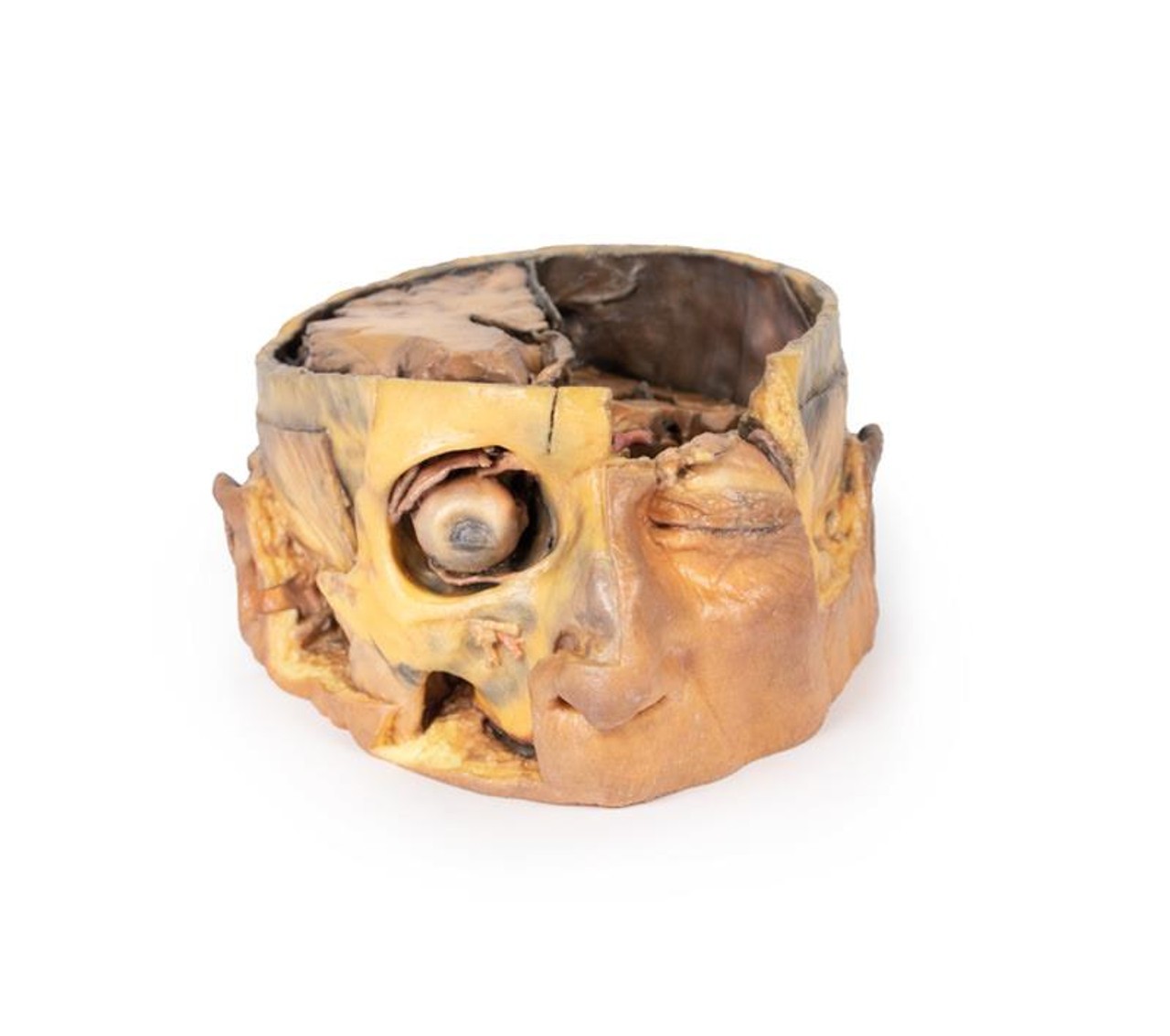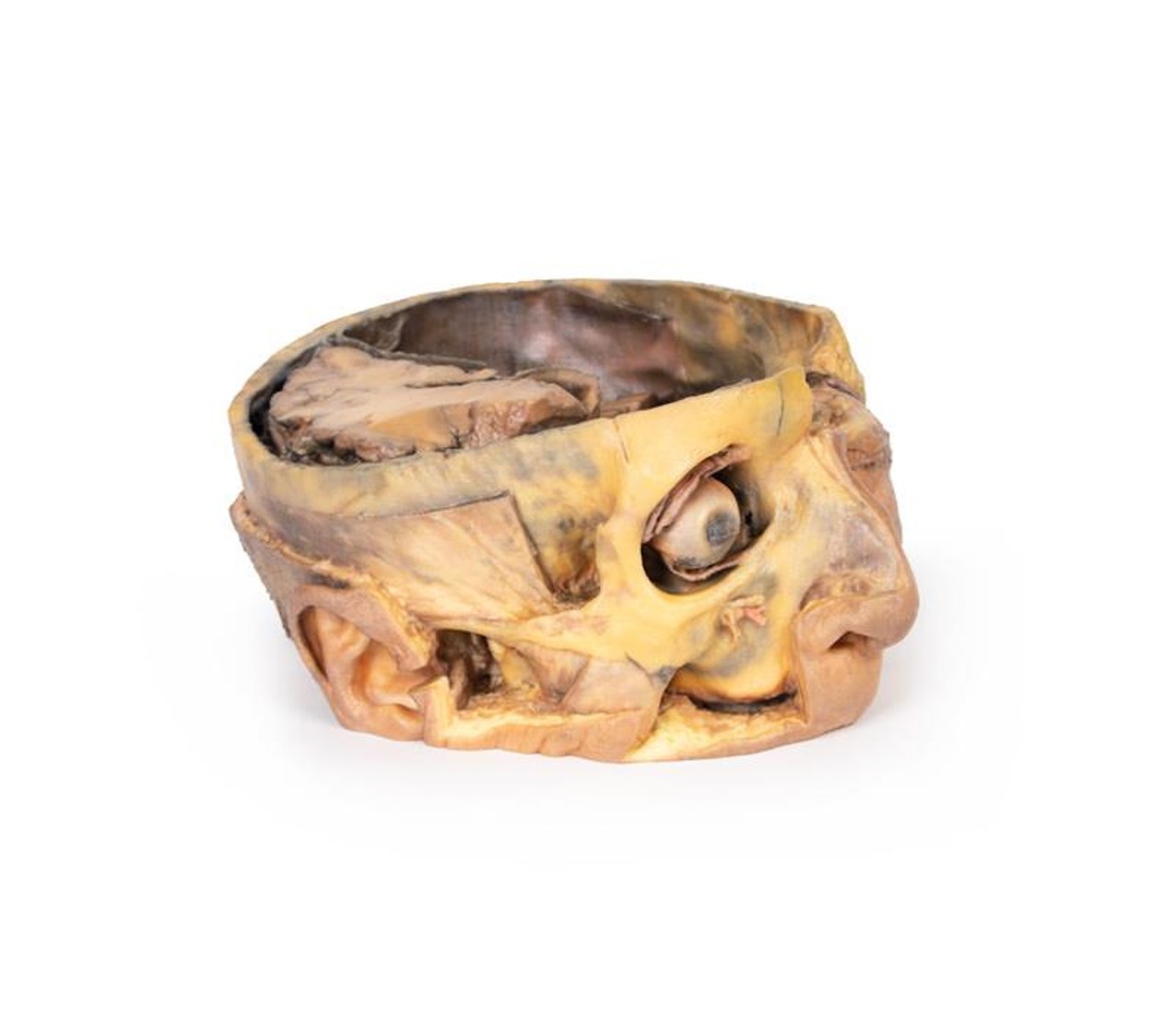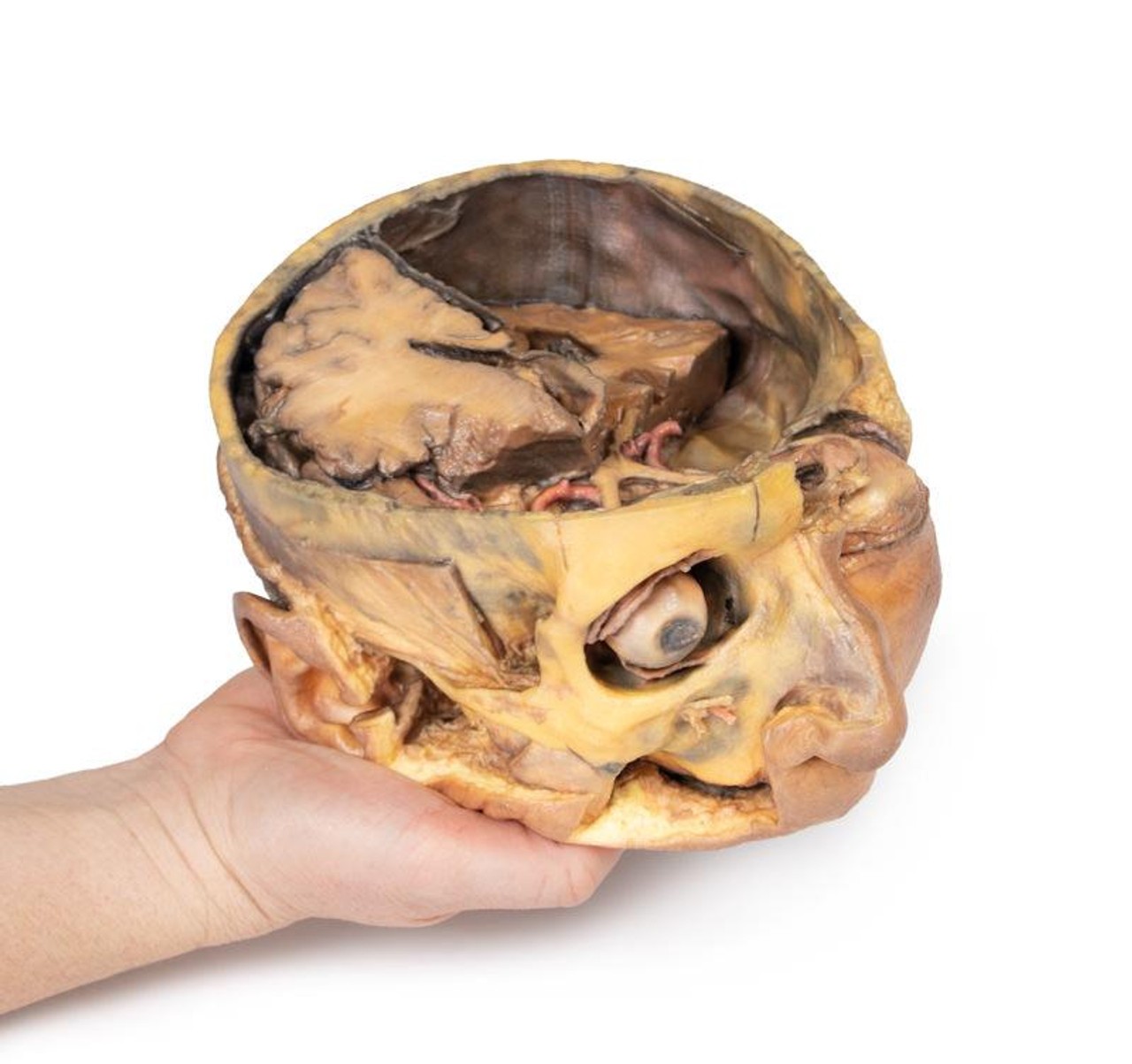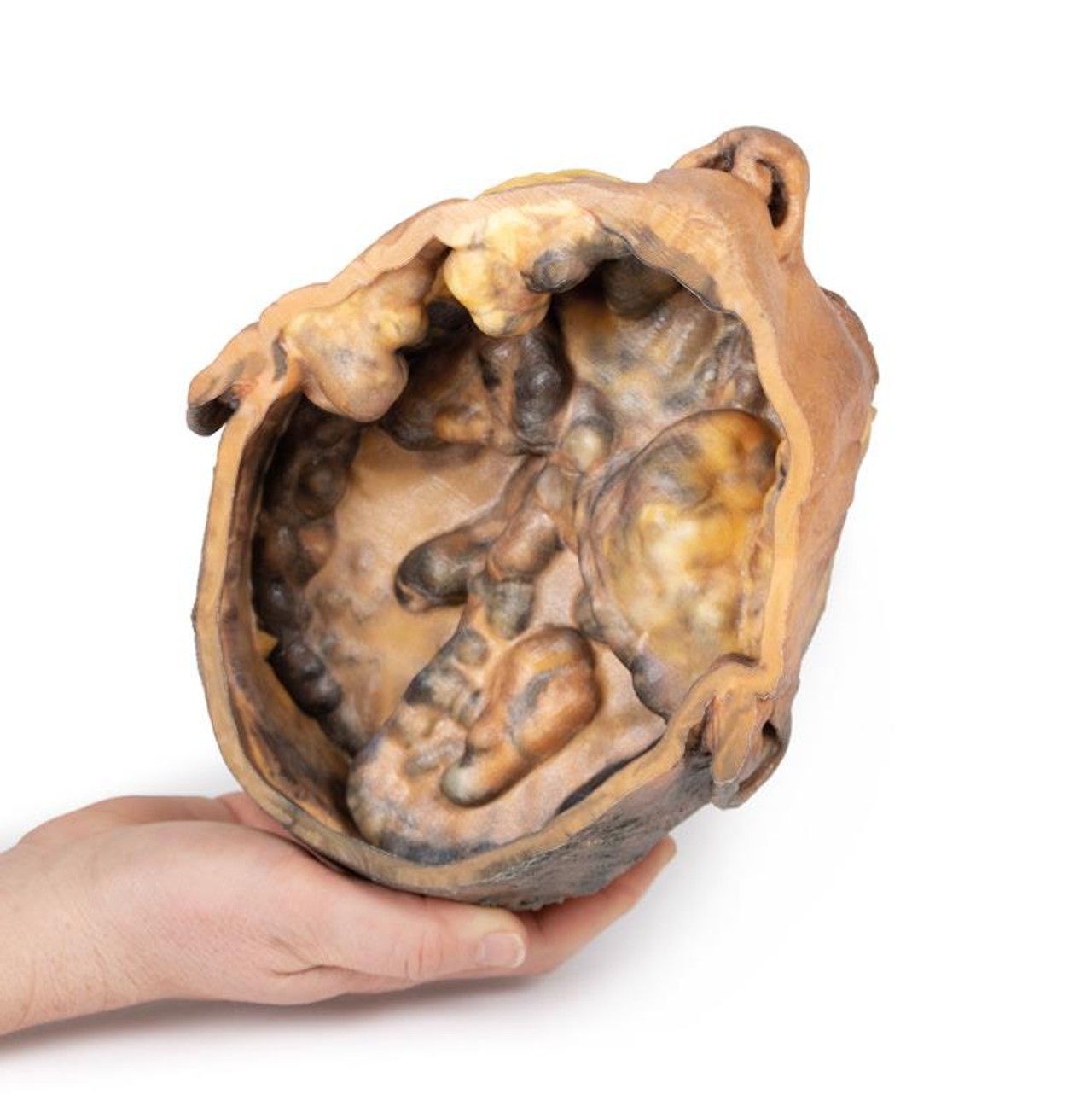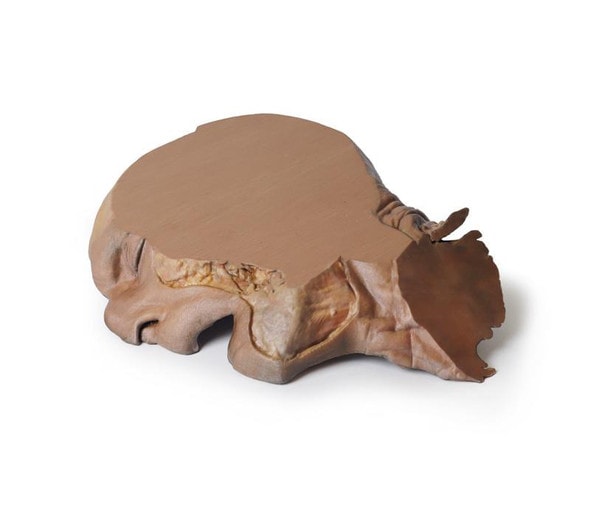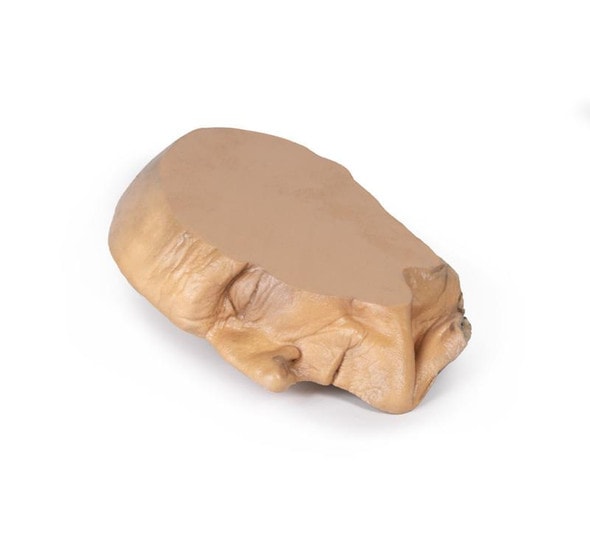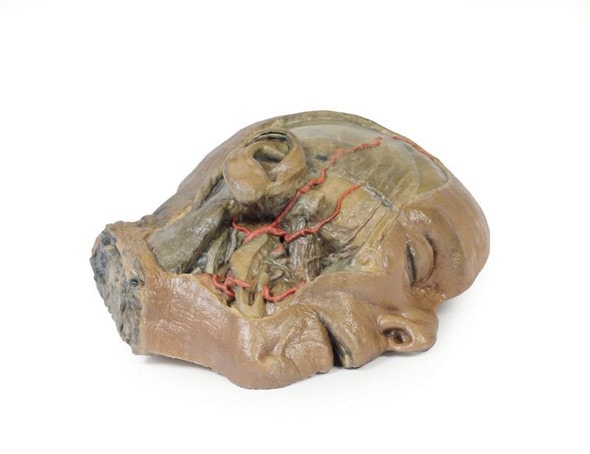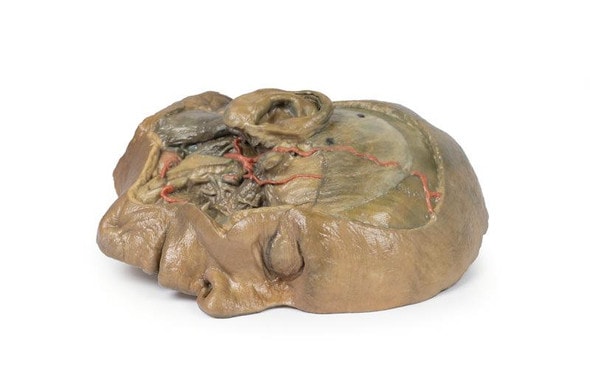Description
This 3D model preserves a transverse section through the cranial cavity with partial dissection of the brain and exposure of the left orbital roof, alongside a deep dissection of the face and temporomandibular joint region.
Within the cranial cavity, the dura mater has been largely removed from the anterior cranial fossa, with retention of the layer in part across the middle and posterior cranial fossae. On the right side, the cerebrum has been dissected to expose the lateral ventricle and to open the lateral fissure to demonstrate the course of the middle cerebral artery between the frontal, parietal and temporal lobes. A more significant dissection of the brain on the left side allows for an appreciation of the midline third ventricle and retained septum pellucidum on the right side, the falx cerebri (with the superior sagittal sinus visible in cross-section), and parts of the anterior and posterior horns of the lateral ventricle with choroid plexus. This differential dissection of the brain also provides an excellent view of the optic nerves, chiasm and tracts, and the relation of these nervous structures to the left internal carotid artery, and bases of the anterior and middle cerebral arteries.
Anteriorly in the cranial cavity, the left optic nerve can be followed into the left orbit, which has been opened to expose several key orbital structures. Centrally, the frontal nerve is well-preserved on the levator palpebrae superioris muscle. Laterally, the lacrimal gland rests in the superior quadrant, while medially the partial dissection into the frontal bone and sinuses affords a clear view of the superior oblique muscle passing through the trochlea. Deep to these superficial structures extraocular fat has been removed to show the medial rectus muscle laterally, and the nasociliary nerve and medial rectus muscles medially.
In the face, the skin, superficial tissue, orbicularis oculi and extraocular fat have been removed from the right orbit to expose the extraocular muscles and lacrimal gland. The levator palpebrae superioris is well-defined despite being detached from the superior tarsal plate. The reflection of the superior oblique muscle from the trochlea onto the eye can be seen, as well as the insertions of the medial and lateral rectus muscle, and the full course of the inferior oblique.
Across the rest of the right side of the face and temporal region a deep dissection has exposed a number of structures. Inferior to the orbital margin, the infraorbital artery and nerve have been exposed exiting via the infraorbital foramen. The superficial and deep heads of the masseter are well defined, and the partial dissection of the temporalis muscle provides a perspective on its broad origin and depth of fibers near pterion (and in contrast to the exposed and undissected right side). Inferior to the zygomatic, the parotid gland has been dissected to expose the mandibular condyle resting in the glenoid fossa and to demonstrate the relationship of the external ear relative to the external auditory meatus.
Advantages of 3D Printed Anatomical Models
- 3D printed anatomical models are the most anatomically accurate examples of human anatomy because they are based on real human specimens.
- Avoid the ethical complications and complex handling, storage, and documentation requirements with 3D printed models when compared to human cadaveric specimens.
- 3D printed anatomy models are far less expensive than real human cadaveric specimens.
- Reproducibility and consistency allow for standardization of education and faster availability of models when you need them.
- Customization options are available for specific applications or educational needs. Enlargement, highlighting of specific anatomical structures, cutaway views, and more are just some of the customizations available.
Disadvantages of Human Cadavers
- Access to cadavers can be problematic and ethical complications are hard to avoid. Many countries cannot access cadavers for cultural and religious reasons.
- Human cadavers are costly to procure and require expensive storage facilities and dedicated staff to maintain them. Maintenance of the facility alone is costly.
- The cost to develop a cadaver lab or plastination technique is extremely high. Those funds could purchase hundreds of easy to handle, realistic 3D printed anatomical replicas.
- Wet specimens cannot be used in uncertified labs. Certification is expensive and time-consuming.
- Exposure to preservation fluids and chemicals is known to cause long-term health problems for lab workers and students. 3D printed anatomical replicas are safe to handle without any special equipment.
- Lack of reuse and reproducibility. If a dissection mistake is made, a new specimen has to be used and students have to start all over again.
Disadvantages of Plastinated Specimens
- Like real human cadaveric specimens, plastinated models are extremely expensive.
- Plastinated specimens still require real human samples and pose the same ethical issues as real human cadavers.
- The plastination process is extensive and takes months or longer to complete. 3D printed human anatomical models are available in a fraction of the time.
- Plastinated models, like human cadavers, are one of a kind and can only showcase one presentation of human anatomy.
Advanced 3D Printing Techniques for Superior Results
- Vibrant color offering with 10 million colors
- UV-curable inkjet printing
- High quality 3D printing that can create products that are delicate, extremely precise, and incredibly realistic
- To improve durability of fragile, thin, and delicate arteries, veins or vessels, a clear support material is printed in key areas. This makes the models robust so they can be handled by students easily.

